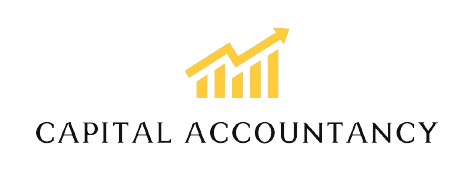HR analytics: What it covers and why it matters
Your people are your biggest asset, and they perform best only when you fully understand what drives them. HR analytics unlocks workforce data to improve hiring, retention and productivity.

No business owner views their workforce as just another part of the machinery. We soon learn how important it is to keep people happy, engaged and motivated.
But without the right data, it’s hard to know what you’re doing right and where you’re missing the mark.
That’s where HR analytics comes in. It helps you spot behavioural trends, understand them, and make the appropriate decisions in response.
In this guide, we’ll explain how HR analytics works, and how you can incorporate the practice into your operations.
Here’s what we’ll cover:
Humanising HR: the magic of AI in empowering people and processes
Harness the power of AI to boost HR efficiency and engagement, foster smarter decisions, and enhance human-centric processes.

What is HR analytics?
HR analytics, sometimes called people analytics, is the practice of using data about your employees to guide better business decisions.
It goes beyond simple record-keeping by helping you uncover patterns and connections in employee performance that aren’t always obvious.
This data can come from HR systems, but also from finance, operations or even external benchmarks. It might include things like pay, training history or attendance records.
When analysed in the right way, it helps you understand workforce trends and challenges with more precision.
Advanced analytics tools can even use algorithms to flag changes in behaviour as they emerge.
This gives you a stronger basis for planning HR strategies.
Adequate systems also ensure that your company always follows data protection rules like GDPR when working with employees’ personal data.
Why are HR analytics important for businesses?
HR analytics gives you an insight into what’s really happening with your workforce. It turns raw data into useful information, allowing you to take action with confidence.
You can identify issues and correct them before they grow and disrupt your operation.
For example, these systems can:
- Improve recruitment efficiency by analysing time to hire and source of hire. This helps HR teams to spot bottlenecks in the recruitment process and identify which channels bring in the best candidates fastest.
- Reduce employee turnover by pinpointing departments or roles with high turnover and uncovering the reasons—such as lack of training or poor management.
- Optimise workforce planning based on business results, seasonal patterns or attrition rates. Analytics aids these decisions by providing headcount trends or forecasting future hiring needs.
- Boost training effectiveness by linking training data with performance metrics. HR can see which learning programmes deliver the best results and adjust their approach to upskill staff more effectively.
- Enhance employee engagement by tracking survey results and engagement scores over time. The system identifies dips in morale and tests the impact of new initiatives aimed at improving the employee experience.
Ultimately, this means you can make better decisions around hiring, retention and engagement based on facts rather than hunches.
Analytics also helps you measure the success of HR programmes—from onboarding to training—and link your people strategy to wider business goals.
What are the 4 types of HR data analytics?
There are four core types of HR analytics, each offering a different view of your people data.
- Descriptive analytics look at historical HR data and tells you what’s happened. It might show your employee turnover rate has increased or that your average time to hire is slipping.
- Diagnostic analytics explores why something happened. It could help you learn that increased departures are driven by one particular team, or that hiring delays are due to longer approval processes, for example.
- Predictive analytics looks ahead. It uses patterns in your data to predict trends and outcomes, such as which employees are most likely to leave.
- Prescriptive analytics goes further by suggesting what you should do next. Based on the data and the problem at hand, it offers concrete actions. For example, it may indicate that the priority is to reduce turnover, or to improve engagement.
Key HR metrics
Within the four types of HR analytics you have the option to monitor specific metrics. The ones you choose should reflect your business goals and help you answer strategic questions.
The right metrics for people analytics help you understand how your workforce is performing and where to improve.
Here are three of the most important categories to track:
1. Employee turnover and absenteeism
If many people are leaving or frequently off work, it may point to poor morale, management problems or some systemic issue.
Spotting this early allows you to address the root causes before the issue escalates.
2. Productivity and efficiency indicators
These help you assess the value your team brings.
- Revenue per employee shows how efficiently you’re operating in financial terms.
- Cost per hire helps you control your recruitment spending and improve your hiring process.
- Training effectiveness looks at the value of learning programmes. Are staff applying their skills? How long does it take for productivity to improve, if at all?
3. Employee sentiment
- Employee Net Promoter Score (eNPS) focuses on loyalty and overall satisfaction. It asks how likely someone is to recommend your workplace to others. This gives you a simple, high-level view of how your team feels about working for you—and whether there’s a risk of mass disengagement or turnover.
- Engagement scores dig deeper into day-to-day motivation and involvement. These are usually based on broader surveys that cover areas such as purpose, recognition, workload and communication. High engagement scores suggest your people are connected to their work, which often leads to better performance and retention.
Humanising HR: the magic of AI in empowering people and processes
Harness the power of AI to boost HR efficiency and engagement, foster smarter decisions, and enhance human-centric processes.

Examples of HR analytics in action
Imagine you notice a spike in staff leaving from one department. With HR analytics, you can look at exit survey response, performance data and absentee patterns.
You’d compare this information with the results for other teams. This might show that poor management—such as excessive workloads—or lack of progression is driving people away.
You may respond by providing management training, offering clearer career paths or improving internal communication.
You could also review workload distribution or conduct stay interviews to learn what motivates current team members to stay.
The goal is to learn how to retain more staff.
Or take hiring. You could analyse time to hire and cost per hire across roles. If one position always takes longer to fill, you can change the recruitment process.
Maybe your job ad isn’t clear, or your interview steps take too long.
How businesses can get started with HR data and analytics
Getting started with HR analytics needn’t be overwhelming. Follow these simple steps to build a solid foundation and grow your approach over time.
1. Align your data with business goals
Begin by identifying what matters most to your business.
Are you focused on reducing turnover, speeding up hiring or improving employee engagement?
Choose metrics that directly support those goals.
2. Collect the right HR data
Make sure you’re gathering accurate data that corresponds to those metrics.
This could include attendance records, performance reviews, training history or survey results.
Performance management tools can help in this respect. However, don’t collect data just for the sake of it—focus on what you’ll actually use.
3. Ensure data governance and protection
You must handle all employee data responsibly.
Set clear policies for how data is stored, accessed and used. Make sure you comply with legal requirements like GDPR at every stage.
4. Start simple, then build
Don’t jump straight into complex predictive models.
Begin with basic descriptive analytics and a few key metrics. As your confidence grows, you can explore deeper insights and more advanced tools.
5. Use the right tools
Good software makes the process easier.
Human resources information system (HRIS) platforms and analytics tools can help you gather, track and analyse data efficiently.
Choose one that fits your size, needs and budget.
For example, some advanced tools now use AI and machine learning to support predictive analytics.
They can help identify high-performing employees who may be at risk of leaving, or flag potential leaders for succession planning based on performance patterns and development history.
HR analytics as a strategic advantage
The benefits of HR analytics go beyond improvements to your HR processes—the practice strengthens your entire business.
It gives you a clearer picture of how your workforce operates and helps you connect your people strategy to wider business goals.
It’s also a valuable skill. Understanding how to interpret and act on workforce data can help HR professionals and business leaders make better informed decisions.
With the right software, even those new to analytics can build this skill over time.
Tools simplify the process by pulling data together and flagging trends. Combined with HR reporting software, you can present these insights in a clear, usable format.
HR teams can also upskill in data literacy, learning how to extract insights responsibly and connect them to strategic outcomes.
This helps ensure analytics activity stays aligned with long-term organisational priorities.
To learn how leading companies are using HR analytics to gain a competitive advantage, explore the latest research in the Fosway HR Analytics Insights Report.
Final thoughts
HR analytics allows you to harness the full power of your HR data, helping you to become proactive rather than reactive.
You can plan ahead, reduce risk and create stronger, more productive teams. That in turn boosts performance, improves employee engagement, and supports your long-term growth.
The post HR analytics: What it covers and why it matters appeared first on Sage Advice UK.
